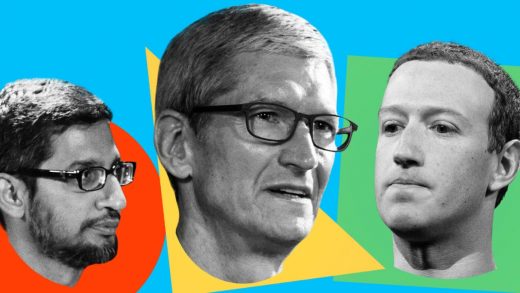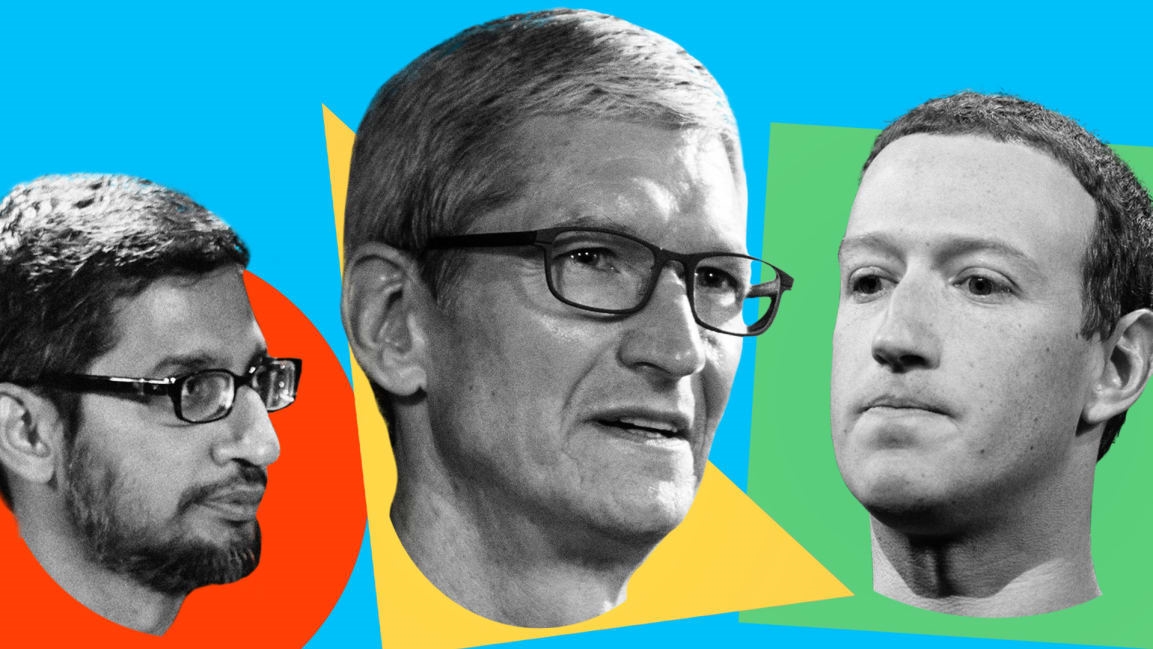The coronavirus is wiping out tech conferences, and that’s not all bad
Is 2020 going to be the year all of Big Tech’s developer conferences got canceled? It’s looking like it might well be. In the wake of the coronavirus, the in-person versions of Facebook’s F8 and Google’s Cloud Next have been canceled and are set to be replaced with virtual events that will be streamed to participants. Google has also canceled Google I/O, and has been less specific about any plans to host an online version.
As I write, Microsoft hasn’t yet canceled its Build event, scheduled for May 19 in Seattle, but this statement appears on the Build website: “In light of the global health concerns due to the novel coronavirus (COVID-19), Microsoft is monitoring public health guidance in relation to in-person events. At this time, global health ?authorities have not issued guidance to avoid travel to this location.”
Pressure may be ratcheting up on Apple to cancel its WWDC conference, which remains unannounced for 2020 but usually happens in early June in San Jose. The public health department of Santa Clara County (which includes San Jose) issued an updated advisory on Thursday with this key line: “At this time, we recommend postponing or canceling mass gatherings and large community events where large numbers of people are within arm’s length of one another.”
There’s good reason for the cancelations. Attendees come from all over the world—including countries like China, Japan, and Italy, all of which have been hit hard by the virus—to attend developer events. It’s conceivable that someone could bring the virus from their home country and spread it to others at the event, who might then take it home with them to spread to others. Immunologically speaking, it’s a dangerous situation.
But if the coronavirus turns 2020 into the Year Without Developer Conferences, the industry might learn some lessons that would be good for both the tech giants that throw such events and the developers who attend them.
If WWDC is canceled
If Apple does cancel or postpone WWDC, or turn it into a virtual event, “it won’t affect the wider developer community, when only a fraction manage to afford to go in the first place,” said Dublin-based iOS developer Steve Troughton-Smith, who regularly attends Apple’s WWDC. “But for those who do, it will rob them of the important social connections that come only once a year, and access to face-to-face contact with the engineers at Apple that build the technologies they might rely on.”
Joseph Cohen, who founded the website-building app company Universe, also said the access to engineers is extremely important. “The talks and announcements are great, but the real value is the conversations we have with Apple employees, other developers, and potential recruits,” he says.
“Apple’s in-person resources are especially helpful,” adds Cohen. “They have labs with engineers who built the APIs we use, designers who set the platform’s standards, and editors who curate the App Store.”
WWDC was always the one time of year when I would get to meet and hang out with my closest developer friends.”
iOS developer Steve Troughton-Smith
And the new feature announcements are important to developers. “WWDC isn’t just the keynote, it’s when developers working in the Apple ecosystem get their first look at the new features that will ship in the next-gen iPhones,” says Chris Stamper, cofounder and CTO of the iOS game developer Hatch.
The value of in-person conferences goes beyond their utility as a way to exchange information on platforms. “There’s something about meeting someone face to face, and also the serendipity that can happen, that just can’t be replicated in a remote way,” says Guilherme Rambo, an independent app developer from Brazil. “When you’re at a tech conference, you’ll meet people who work for the companies you’re a customer of, the people who make the apps you enjoy using, and sometimes business deals . . . are made.”
The hallway or lunchtime conversations are often about information gathering. “Developers are trying to get as much information and opinions on where they should be investing their time and money,” says Moor Insights and Strategy principal analyst Patrick Moorhead. “They certainly use onstage presentations as a way to get there, but get reinforcements by the personal conversations.”
And some of it is just social and personal. “For me, WWDC was always the one time of year when I would get to meet and hang out with my closest developer friends, and we would get to work together and inspire each other in ways we don’t get to, normally,” Troughton-Smith said via Twitter message.
Conferences are also an opportunity to get a shot at meeting tech-industry celebrities such as Microsoft devices group lead Panos Panay, Facebook engineering VP Andrew Bosworth, and Apple’s iOS lead Craig Federighi. (Personal note: At the last Apple event I attended, I walked out the door of the Steve Jobs Theater and ran, bodily, right into Apple cofounder Steve Wozniak. That was before he worried that he had caught COVID-19.)
“I have been introduced to industry legends (my own personal heroes) by virtue of being at an event with the right group of people,” writes Zen Studios VP of publishing Mel Kirk in an email. “It takes time to work into these levels of connections, and I really think events facilitate the opportunity for this to happen.”
Going virtual
Still, for all the benefits of spending a few days soaking up information and inspiration in person, the cancelation of in-person big tech events in favor of online replacements might make the events more inclusive. There are developers across the U.S. and around the world who get shut out when the conferences get sold out. Even more of them simply can’t afford the admission fee (last year’s WWDC was $1,599) and travel expenses required to spend time in the Bay Area or Seattle.
Apple uses a lottery system to pick registered developers at random, who then get the opportunity to buy a ticket for the event. “Not having a set of 5,000 people who paid to be there, and potentially millions of other people who don’t get access to things exclusive to those attending, such as labs and all of the networking, but instead having everyone on the same level can be a good thing,” says iOS developer Rambo.
Even before the coronavirus came along, the major developer conferences were developing more robust online elements. Far more people stream the keynotes than watch them in person. Many conferences now stream the developer sessions as well. And an increasing body of sessions from the events is archived online.
Apple has already gone a long way down this road. Most of the developer sessions are live-streamed and replays of the sessions are available online and via an app.
“Often the video content produced during WWDC will serve as the only documentation of new features for months to come,” says Hatch’s Stamper. “Without that content, we might see some companies take longer to adopt new features, or be slower to update their apps to support new hardware in the fall.”
With all the cancelations this year, big tech companies like Apple may get some time to really think about the value of big events in the age of live-streaming. Apple, for one, might think about ways of further virtualizing WWDC. Earlier this week, Jason Snell therorized on Macworld about what such an event could look like:
The session content of WWDC could happen from a few studios at Apple Park, with no need for a large group gathering. In terms of a keynote, Apple has several options. It can invite a small number of guests to a live media event at the Steve Jobs Theater—possibly with health checks for attendees—and make its major WWDC announcements in the same way it unveils the new iPhone every year.
Not just for developers
Another twist to the cancelations now underway: The audience for developer conferences has become far larger than the engineering communities served by the tech giants. The new hardware and software Google announces at its I/O conference tend to dominate a whole week’s worth of tech news. Apple typically uses WWDC to announce new features in the operating systems for the iPhone, iPad, Mac, Apple Watch, and Apple TV.
These announcements are the start of a months-long hype cycle that puts new products on consumers’ radars and moves them toward using or buying them when they become available later in the year. So the marketing departments of these companies lose a chance to introduce their new products amid the drama of a live event.
But the news about the new products will come out one way or the other, points out Creative Strategies analyst Carolina Milanesi.
“These events have a big marketing component, but given we don’t always have hardware the impact is mitigated, she said via a Twitter DM. The tech companies will get the news out one way or the other, and the press will cover it as always, Milanesi says. “It will be interesting how these companies will engage on social media around the events . . . trying to generate more buzz.”
Above Avalon analyst Neil Cybart doesn’t believe the absence of in-person developer events and conferences is going to be a huge negative for the largest tech companies. “Given how the news cycle has been trending in recent years, in-person events were already losing influence in terms of grabbing people’s attention,” he writes in an email message. “As for helping developers and holding press and media briefings, virtual alternatives will probably work out okay.”
And anyway, Cybart says, big tech companies probably have far more to fear from COVID-19 (and whatever variants the future might bring) than just the cancelation of developer/marketing events.
“These companies are likely facing larger challenges with keeping employees safe and avoiding product development timelines from slipping,” he says. “Versus coming up with alternatives to in-person product unveilings.”
For Apple, skipping WWDC this year would be disappointing but not catastrophic. But if the next iPhone was delayed until next year by supply chain and manufacturing hangups in Asia caused by the coronavirus? That would be a problem of another order.
(19)



